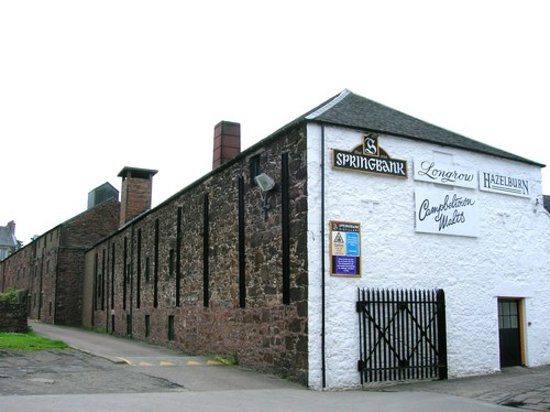History of Springbank Distillery
Founded in 1828 on the site of a yet older illicit operation, Springbank is one of just three remaining distilleries in the Campbelltown region. Though it wasn’t directly founded by them, the history of Springbank is firmly tied to five generations of the Mitchell family.
William Reid, an in-law of the Mitchells, was the first licence holder at Springbank. But money problems forced him to sell to his in-laws, brothers John and William Mitchell, in 1837. William left the operation in 1872 and was replaced by John’s son Alexander Mitchell.
While the 19th century was a boomtime for the entire Campbelltown region, with dozens of distilleries, the 20th century was not so kind. Only Springbank and Glen Scotia would survive from that time, and even they did not escape completely unscathed. Springbank first had to close in 1926 due to recession, and didn’t reopen until 1933. Things picked up after that, and it ran smoothly for several decades. The floor maltings were decommissioned in 1960, and J & A Mitchell bought the independent bottling company Cadenhead in ‘69 so they could handle their own bottling. The second time the distillery shut was in 1979, and this time it stayed closed for almost a decade.
When the distillery re-opened in 1987, it was with a clear vision from Hedley Wright, the great-great grandson of John Mitchell, to put all their focus on single malt whiskies. Springbank also became increasingly invested in carrying out as much of the process as possible on site. In house floor malting resumed in 1992, and today it is the only distillery in Scotland which supplies 100% of its own malt.
The distillery is equipped with a 3.5 ton mash tun, six Larch washbacks, and three stills. The stills are notable for using a mixture of methods for both heating and cooling. The wash still is heated by both internal steam coils, and a direct oil fire from outside. The wash and one of the spirit stills use regular condensers, but the second spirit stills still uses a worm tub and tubes. Despite having a capacity of 750,000 litres a year, Springbank is well known for never coming near that limit.
There are three main brands of whisky which come from Springbank which differ based on their peatiness and the number of times they are distilled. It’s namesake whisky is distilled two and a half times, and used lightly peated malt. Hazelburn is triple distilled and unpeated, and Longrow is doubled distilled is distinctly smokier.
The core Springbank range consists of 10, 12, 15, 18, and 21 year old single malts. The Springbank 10 year old is matured in Bourbon and Sherry casks and carries a balance of fruity and maritime notes. Aromas and flavours of citrus and brine are joined by spice in the palate and finish.
There are only two expressions in the Hazelburn range, the 10 year old and the Sherry Wood. The Hazelburn 10 year old is a richly sweet whisky, starting with aromas of apples, pears, and honey. On the tongue it continues to be fruity, with added vanilla, before an oily and sweet finish.
There are three main Longrow bottlings available, the Peated, the Red, and the 18 year old. Longrow Red is a smooth but complex whisky. Matured in red wine casks to empart rich, fruity flavours to the peated Longrow, it is also always bottled at cask strength.





